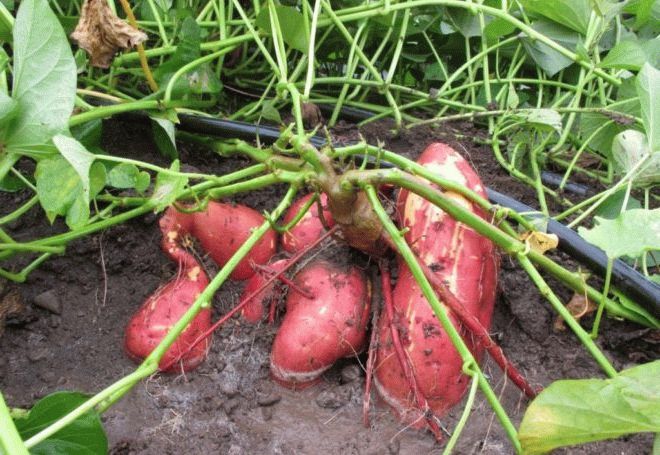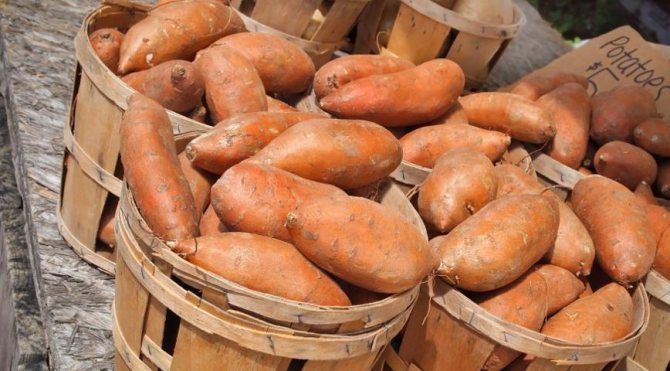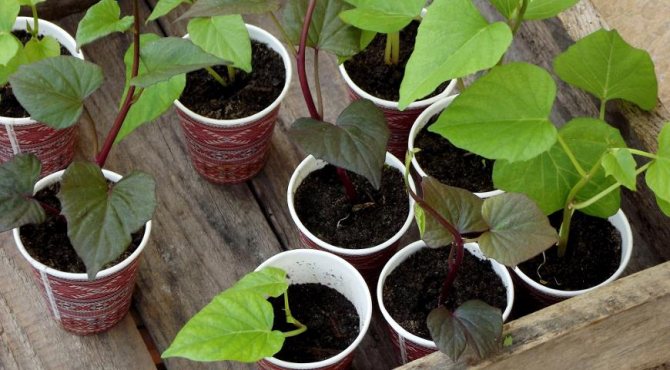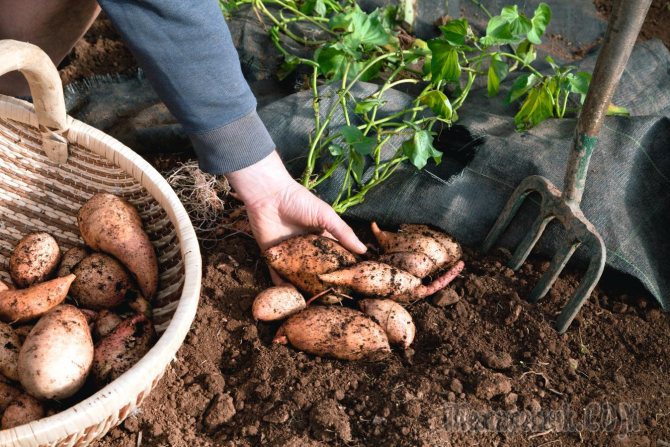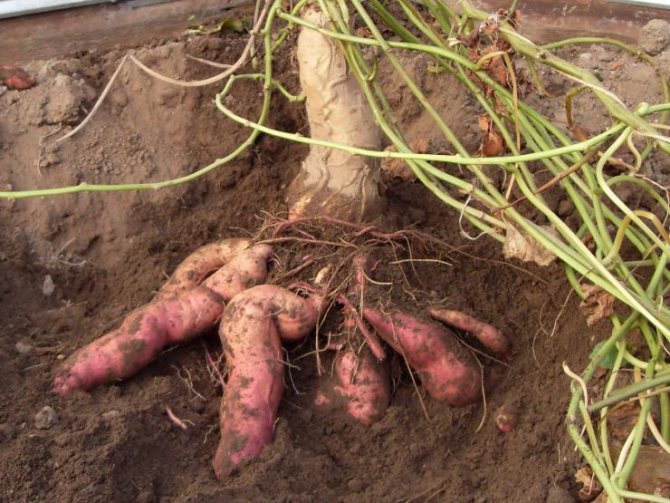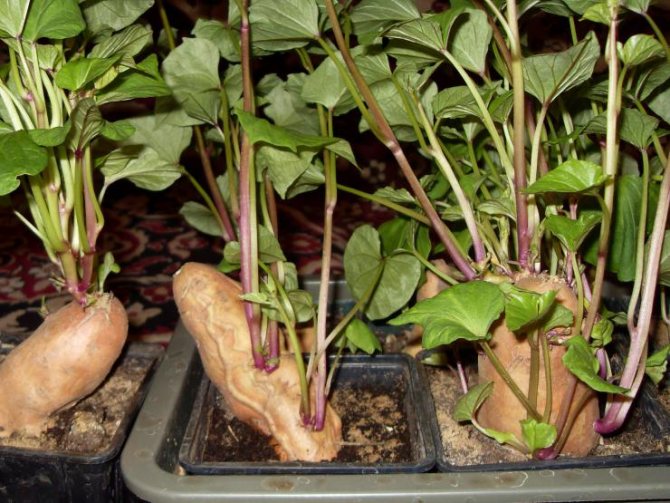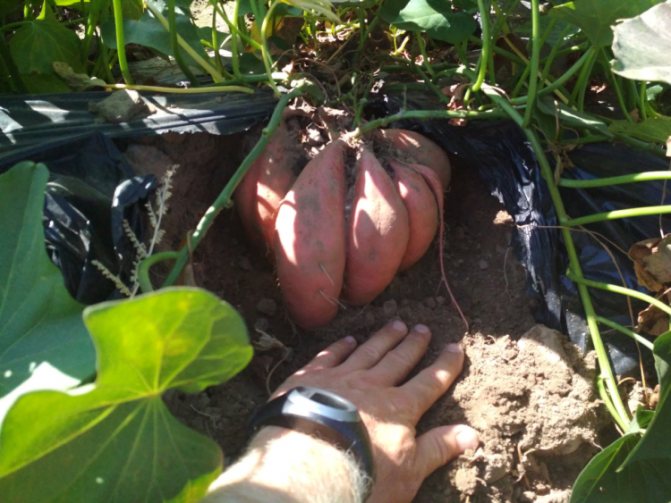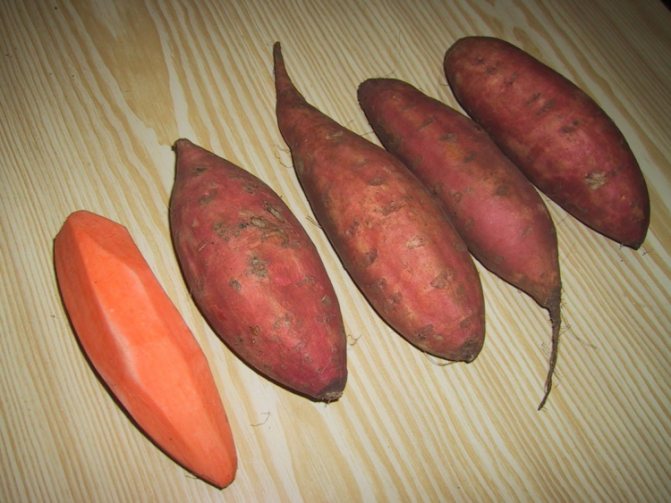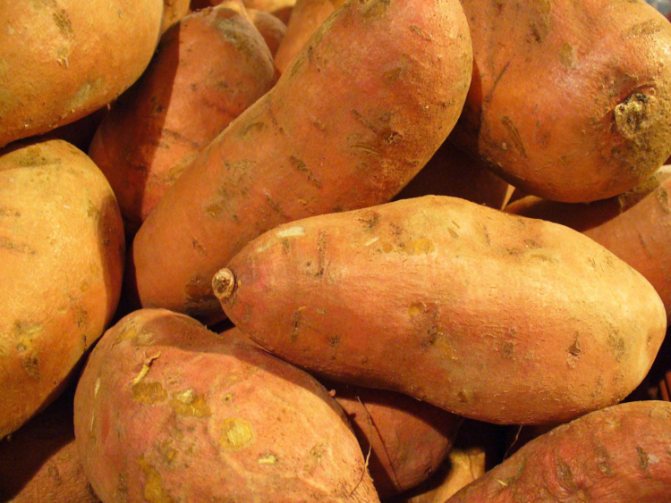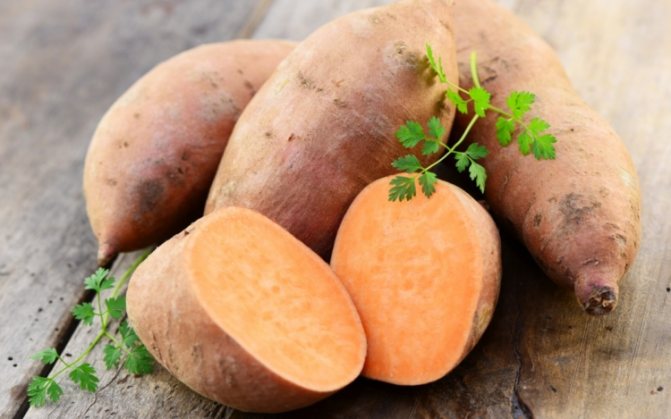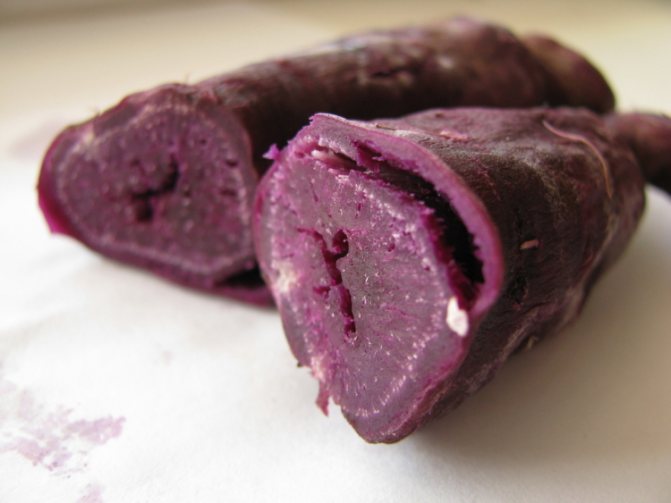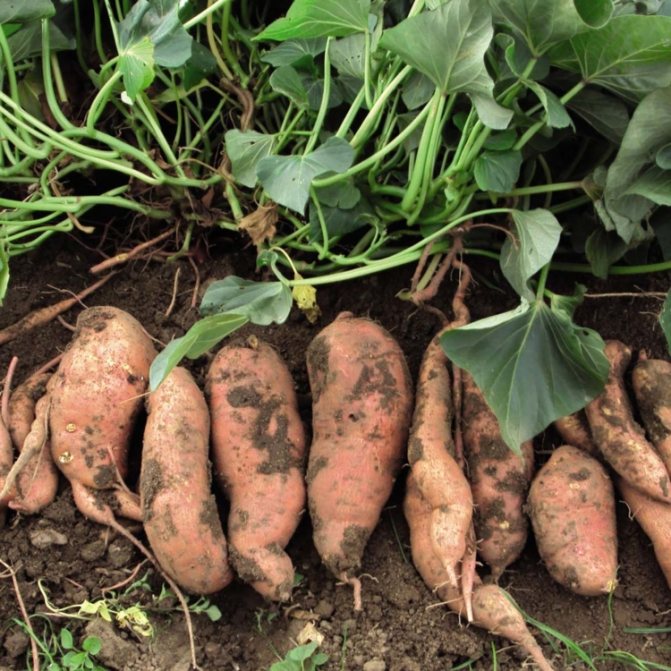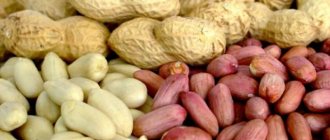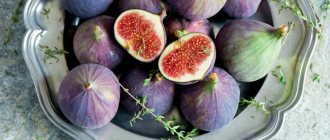A unique vegetable, a root vegetable under the simple name sweet potato, in fact, has absolutely nothing to do with potatoes, except for the similarity in shape. The plant belongs to the bindweed family. Suitable for growing in Central Russia in the open field.
The root vegetable contains no fats and cholesterol, but there are many vitamins A, C, B, K, as well as iron, magnesium, potassium, pantothenic acid, thiamine, niacin and riboflavin. 100 g of product contains only 70 - 90 calories. If you regularly use sweet potatoes, you can significantly strengthen the immune system, get rid of colds forever, and support the cardiovascular system. The complex of vitamins allows you to normalize the function of the thyroid gland, improve the condition of the skeletal system, hair and nails. Today we'll talk about how to grow this miracle - a vegetable in your garden and delight loved ones and friends with new dishes.
What is sweet potato
Many summer residents and gardeners are familiar with such a plant as morning glory bindweed. In fact, this is a decorative sweet potato. Growing an annual morning glory is not a big deal because its owner expects only pretty flowers from it. The sweet potato in question is capable of more.
A bush with heart-shaped leaves spreads along the ground and tubers are formed on the roots, located along the entire length of the lashes. They taste like potatoes and their use depends on the degree of sweetness. Eating some varieties of sweet potatoes leaves a taste of other vegetables when paired with potatoes. The stems of the so-called liana can reach 5 m in length, and its roots are much larger than potatoes.
It is noteworthy that the Colorado potato beetles "do not visit" this culture. The plant is not susceptible to other diseases that are inherent in the Solanaceae family.
In Peru and Colombia, sweet potatoes are known as a perennial plant. At low temperatures, the culture immediately dies, therefore, seasonal cultivation of sweet potatoes is practiced in central Russia by the seedling method.
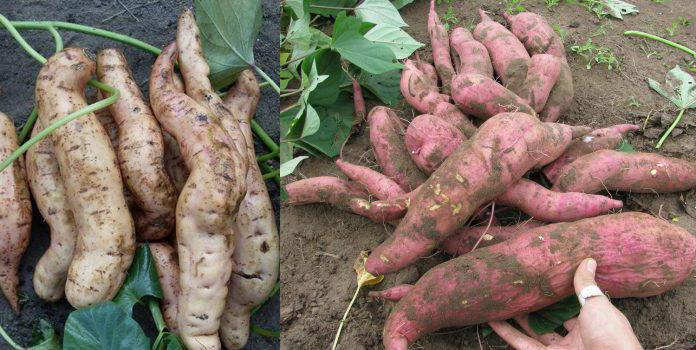
Growing in different climatic zones
The cultivation of this agricultural crop has a number of specific features that are inherent in different climatic regions. This is reflected in the table.
| Region | When planted | Growing features |
| In Crimea | Mid April - early May | The best planting method is with cuttings. |
| In the suburbs (middle lane) | The end of May | Seedlings are more suitable for growing. |
| In the Krasnodar Territory | First days of May | Only the seedling method is suitable, both early and late-ripening varieties are common. |
| In the Urals | End of May - beginning of June | As soon as the daytime temperature drops below + 25 ° C, watering should be stopped. |
| In Siberia | The beginning of June | Cultivation in insulated beds or ridges. Planting of seedlings in May is allowed, but with the obligatory use of film. |
Growing seedlings
Growing sweet potatoes with seeds is a long process, and they are extremely rare on sale. Planting tubers directly into the ground, as when planting ordinary potatoes, is risky, as they can die from the cold. Therefore, for growing sweet potatoes in the middle lane, seedlings are obtained from the tubers of the plant. A large number of seedlings can be obtained from a few root crops, as they grow in waves.To get the most out of the tuber, plant it in February. The sequence of germination of future seedlings is described below.
- Selected root crops should be disinfected. A small amount of copper sulfate is diluted in water and sweet potato tubers are immersed in this solution for several hours.
- Pour 10 cm of substrate into a rectangular container, and 2 cm of sand on top. The sand is needed so that the tubers do not come into contact with the ground. It also prevents the formation of a coma by filling the voids between the walls of the pot and the ground.
- Place the sweet potato fruits horizontally and press a little into the free-flowing mixture. Then add sand so that half of the tuber remains on the surface.
- Spill well with water and place on the windowsill. Adequate lighting is an important factor for the development of the sprouts. Unlike potatoes, sweet potatoes love all-round exposure to sunlight.
- Depending on the variety, sprouts may appear at different times. In some types of sweet potatoes, sprouts hatch on day 7, but it happens that you have to wait a month. Although the conditions for germination of tubers play a secondary role, watering and lighting still speed up the process to some extent.
- It is important to ensure that the tubers do not rot. Watering should be done regularly, but in moderation.
- Sprout growth is negatively affected by temperature fluctuations. It is necessary that the temperature in the room is constant and not lower than + 25 ° C.
- After the sprouts appear, you need to make sure that they do not overgrow, and cut them off in time. This is important both for their further development and for the next wave of seedlings to start.
- As soon as the sprout has released the 5th leaf, it is cut off and transplanted into a glass. If you leave a part of the stem with one internode below, then a new cutting will grow faster from it. The cuttings should have 4 internodes.
- The first cut shoots are planted in the soil mixture, placed in a lighted place and periodically watered. Cuttings from the last wave can simply be placed in the water for rooting, since there is a short period of time left before planting in open ground.
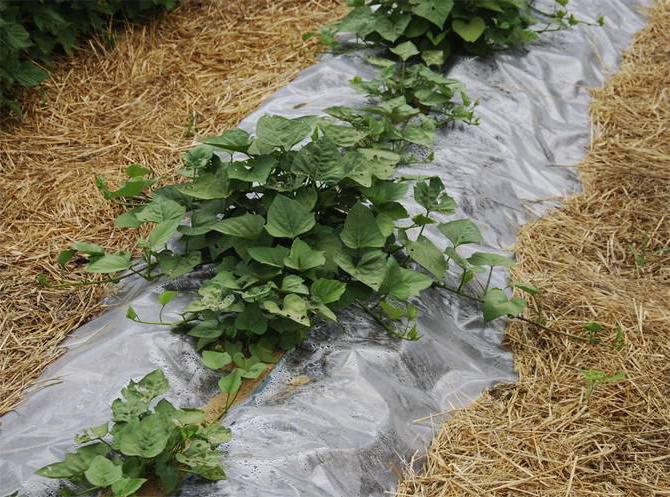

How to grow sweet potatoes at home
As already mentioned, it is first necessary to grow seedlings. It can be obtained from purchased seeds or cuttings from a ripe root crop. Usually the second method is chosen, which is simpler and more understandable for many.
Store-bought sweet potatoes are unlikely to sprout, since the vegetable is processed with special chemicals for long-term storage and transportation. You will have to look for someone who is engaged in the cultivation of vegetables or inquire in a specialized store focused on the cultivation of vegetables, including exotic ones.
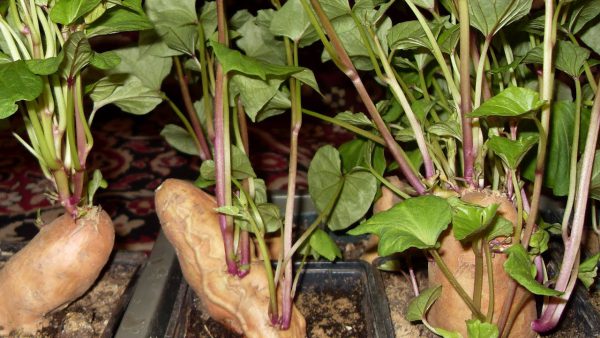

It should not be planted immediately on the beds, first you need to grow high-quality seedlings indoors.
Plant cultivation and cultivation methods
The main difference between sweet potatoes and regular potatoes is their breeding method. We plant potatoes with tubers, which are better sprouted. This option is not suitable for sweet potatoes: many sprouts and small tubers, crooked and unusable, will appear.
To get a normal crop, you need to germinate the tubers in a greenhouse or indoors (if you are just trying to get acquainted with this crop). For planting, green shoots called slips are used. At first, they do not have a root system, but the roots appear on the second day, if you put the slip in a glass of water or put it in peat. Read about picking tomato seedlings here.
Then a sprout is planted in the garden. With high soil moisture, warm weather, it begins to develop and grow very quickly.
The sweet potato tuber is not a root crop in the known sense, but is a modified root system. Therefore, the maximum depth for good growth should be no more than 25 - 27 cm, that is, the vegetable is grown in the upper layer of the soil.
Planting from seeds
Purchase seed material in a special store, make sure the quality of the product. Since germination takes a long time, plant the seeds in the second half of January and, at most, in the first decade of February. Soak the material in room temperature water for two days in advance.
The soil is required loose and nutritious. The best composition: parts of humus, sod land and coarse river sand. The technology is as follows.
- Make holes a few centimeters deep in a container with soil.
- The planting material is deepened, sprinkled with soil. They crush a little.
- Next, you should organize a greenhouse: cover the containers with seeds with film or glass, keep them at a temperature not lower than +18 - 20 degrees.
- The room must be regularly ventilated.
- Watering should be organized regularly, but in a very moderate amount, avoiding excessive dampness.
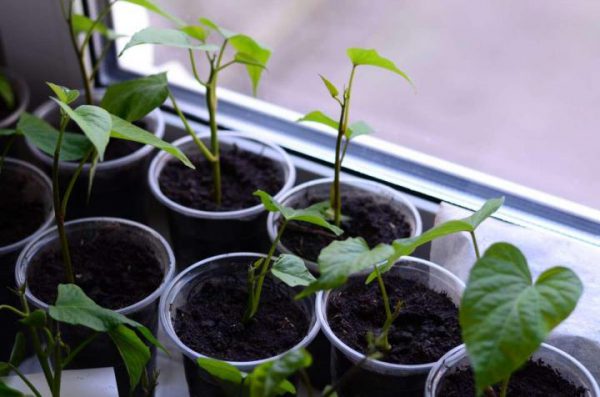

Seedlings are ready for transplanting when the height of the shoots is at least 15 cm. 4 - 5 internodes should be formed on each sprout.
Vertical way
To obtain cuttings, the tuber is germinated. If he was taken from a private person, then the procedure begins 1 - 2 months before transplanting to the garden. Shop, as mentioned, may not germinate at all, some for a long time - up to 4 months. Read about the processing of tomato seeds before planting seedlings here.
Before planting pineapple or babat, it is recommended to treat them with fungicides to protect them from rotting and infections. Vitaros, Vitavax and analogues are suitable. According to reviews, shoots appear much faster after processing.
Sprouts, like litchi from a bone, make their way in any places, even smooth sweet potatoes give growth. If the vegetable has rotted a little, then you do not need to throw it out: carefully divide the whole part into cuttings and use for planting.
This method assumes the following actions.
- Prepare a container with drainage holes to keep moisture out and get enough oxygen and air.
- You will need to make 2 main layers of soil: the lower soil must be steamed or frozen in advance, and the upper one is a mixture of sand and sawdust. Some gardeners do not use the top layer.
- Tubers are inserted in an upright state up to half, as they grow in the ground, compact the soil and water abundantly. It is very important to maintain a constant temperature regime of + 20 degrees.
Horizontal
The same as vertical, only the tubers fit into the soil. The soil should be poured up to half of the vegetable. You also need to constantly maintain +20 - 25 degrees and moisturize the substrate abundantly. It is undesirable to lower the temperature, since growth immediately slows down, and at below +10 it stops altogether.
Growing in water
There is another way: the tuber is cut into cuttings, which are placed in a container, where a napkin spreads and there is a 2 cm layer of water. The sweet potato is pinned with a toothpick to fix it. It is important to regularly change the water to fresh, and before germination, treat the tubers with fungicides, soaking them for half an hour in a solution.
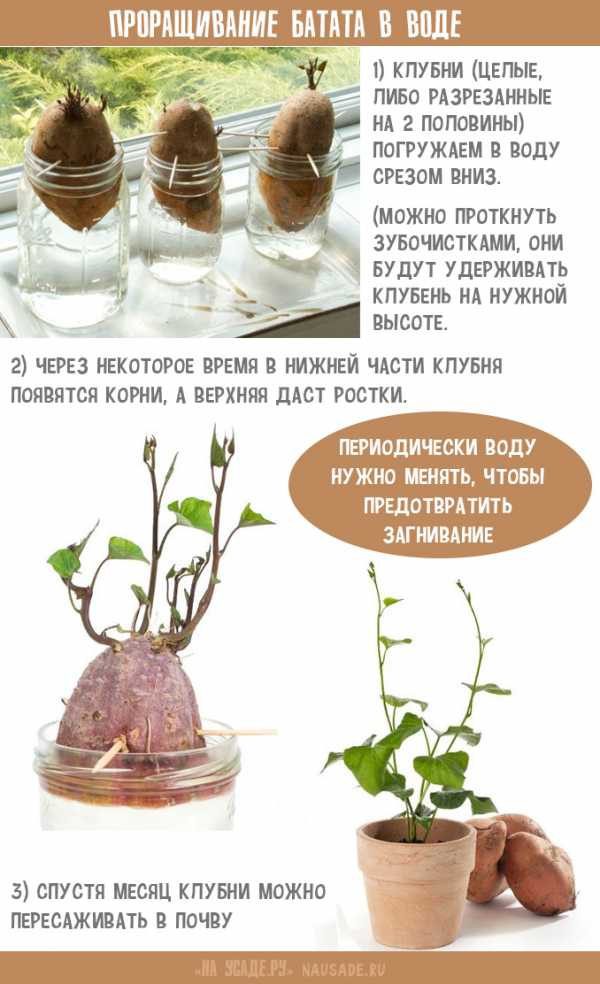

The cut goes down the stalk. Thus, it is immediately determined where the bottom and top of the plant are. Otherwise, it can often be confused. Sprouts will then appear anyway, but a little later. In addition, it is possible in this way to increase the amount of planting material several times.
The workpieces are transferred to the soil after about 30 days, otherwise rotting may appear. Further, the sprouts are cut at a height of 12-15 cm, and must have at least several internodes. Then they are placed in water to grow roots.
When you harvest, the long stems can be cut into cuttings and planted as indoor plants, and then seedlings can be grown from them, having previously divided, rooted in the ground or placed in water.
An important condition
Since the homeland of the root crop is warm regions, the main condition for it will be a suitable temperature, not lower than + 25 ° C. This means that when growing sweet potatoes in central Russia, it is important to observe a certain period. In this case, the plant must have time to develop and give tubers. This is another reason why sweet potatoes are not planted with tubers like regular potatoes. The growing season for this plant can last from 90 to 120 days.
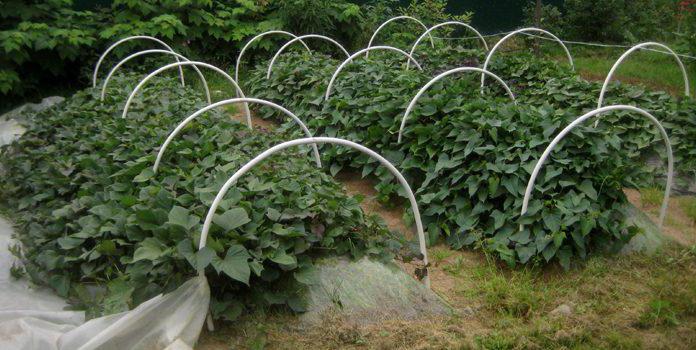

Storage
The sweet potato is stored in a dry room at a temperature of +10 to +12 o C. Some gardeners prefer to freeze the fruit. At the same time, the taste and useful properties do not deteriorate after freezing.
Simple guidelines will help protect you from common beginner mistakes when growing “exotic potatoes”. There is no doubt that in the end there will be a very tasty and healthy reward. After the first positive results, a person will again want to grow a sweet potato in his garden.
(1 votes, rating: 5,00 out of 5)
Ground requirements
Although sweet potatoes are not picky crops, they prefer sandy loam and loamy soils with little acidity. Therefore, the cultivation of sweet potatoes in Russia involves the creation of a suitable soil composition. It is better to prepare the soil in the fall. Together with digging, humus, superphosphate and potassium sulfate are introduced. If the soil is too acidic, then liming is necessary. Nitrogen fertilizers are applied in the spring. A generous yield of sweet potatoes is obtained on drained soils.
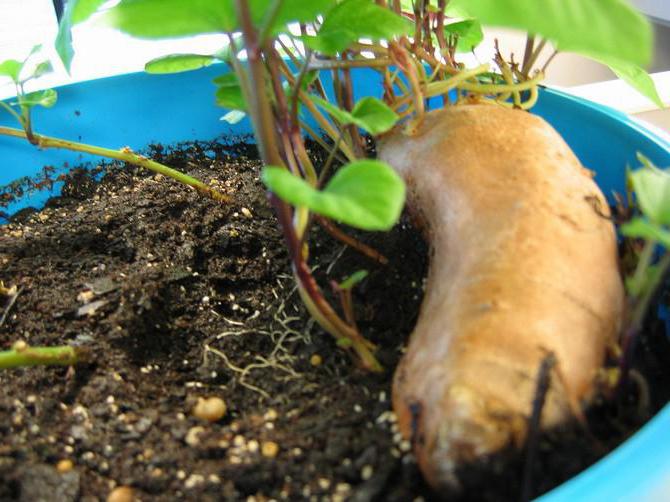

What will it be about
- Sweet potato in a nutshell History of cultivation in the USSR and Russia
- Varieties of sweet potato
- Culinary properties
- Global culture
- How to get sweet potatoes
- General landing pattern
- When to collect
Transplanting
For growing sweet potatoes, open areas are chosen.
You should wait until the soil warms up to + 15 ° C, and the air temperature will not be lower than + 20 ° C. After the weather has stabilized, seedlings can be planted.
Select cuttings if necessary. Leave those with well-developed internodes. Before planting, the soil is pre-moistened.
The distance between the plants is 30 cm, and the row spacing is about 1 m. When planting the cutting, 2 internodes are left on the aerial part, and 2 or 3 are immersed in the ground. Thus, the cutting is in a horizontal position with respect to the ground.
In order for the plants to take root safely, at first they need to be watered regularly and the soil should not be dry.
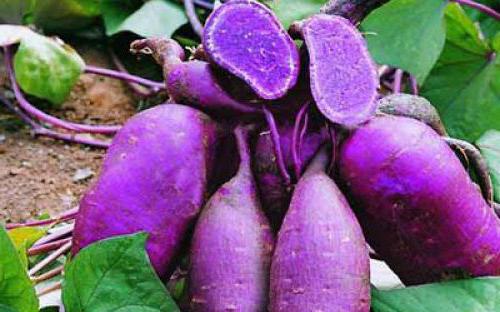

How to choose the right variety
Sweet potato has about 7000 varieties, differing in taste, ripening duration, purpose (dessert, fodder and vegetable varieties). When choosing a variety for cultivation, you should rely on a number of criteria:
- the average air temperature in spring and autumn in your area;
- when the first autumn frosts begin;
- the length of the summer season.
On average, the price for a cutting is in the range of 50-70 rubles. A package of seeds weighing 10 g will cost 180-250 rubles. You can also purchase a tuber for self-germination - 20-30 rubles apiece.
In general, it is not so easy to find seed material, since sweet potatoes are still not so common among Russian gardeners. Many people find on the forums those who are already growing sweet potatoes, and order seed from them, or even turn to foreign online stores.
Care
Growing sweet potatoes at home consists in timely feeding, watering and some observations of the plant.
- For the entire period, the culture should receive 2 additional fertilizing. The sweet potato is very responsive to organic fertilizers.Therefore, with their help, the plant is fertilized at the first stage of growth. In August, potassium fertilizers are required for sweet potatoes, as they affect the formation and number of fruits.
- Timely removal of weeds and watering promotes the growth and development of sweet potatoes. After the cuttings have taken root, daily watering is canceled. The plant is watered as needed and by the period of fruit ripening, the amount of moisture is gradually reduced.
- As noted, sweet potatoes are resistant to diseases and pests, unlike other crops. But he is still susceptible to some harmful insects. There were cases when the tubers were eaten away by the wireworm or the plant was "attacked" by mealybugs. Although the sweet potato is not susceptible to Colorado potato beetle infestation, the repellent can protect the plant from other pests. Processing is carried out 2 times per season.
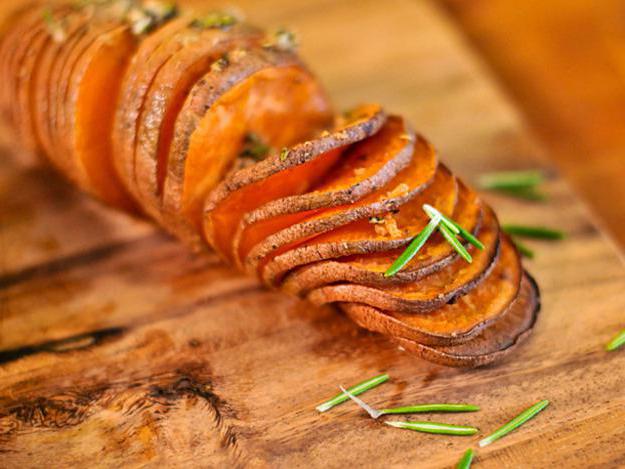

Sweet potato care in the Moscow region
- Seedlings and cuttings can be transferred to open ground as soon as the length of the shoot reaches 25 cm. The air should be warmed up to 25 degrees Celsius. While the air is cooler, cover the beds with foil.
- This crop will grow well in any kind of soil. But it is still worth it to loosen it well by about 15-20 centimeters. Then add humus, potassium sulfate and superphosphate there. You can also use ammonium nitrate - dilute a matchbox with 10 liters of water.
- It is very important to ensure that the lashes do not take root in the internodes. To do this, it is necessary to lift the vines on each bed and tear the resulting roots.
- In the second half of August, you need to pinch the upper part of the lashes - such a manipulation will help make the tubers larger.
- The sweet potato is considered a drought tolerant crop. Therefore, it needs frequent watering only in the first month after planting. After this time, watering is reduced to once a decade. There is no need to moisten the soil 15-20 days before harvesting. As soon as you moisten the soil, it must be loosened so that a crust does not form.
- During the period of active growth of tubers, which occurs around August, the sweet potato needs additional feeding with potassium fertilizer. It is best to use an ash solution for this. It is prepared as follows: two glasses of wood ash are dissolved in 10 liters of water and infused for 7 days, while stirring constantly. Water each bush with a liter of solution.
To achieve an excellent sweet potato harvest in the Moscow region, it is important to provide the plants with the correct temperature regime. Best of all, if the thermometer readings are in the range of 25-30 degrees, then the "sweet potato" will form long vines and healthy tubers.
In the first month after planting, "sweet potatoes" need abundant watering, however, water stagnation in the beds should not be allowed - the plants will begin to rot. Over time, it is necessary to moisten the soil less and less, and 2 weeks before harvesting, watering should be stopped altogether, otherwise the tubers will be watery.
You need to feed the sweet potato with potash fertilizers, starting in mid-August, when fruits begin to form on the vines. Also, herbal infusions and mullein solution can be added to the soil.
Harvesting is usually possible in September-October, when the leaves and stems of the sweet potato turn yellow. It is best to dig up the tubers with a pitchfork so as not to damage the fragile fruits. For storage, sweet potatoes should be placed in boxes, sprinkled with sand or shifted with paper.
Fertilizers for the future garden are best applied in the fall. For 1 sq.m. - 3 kg of rotten manure or 5 kg of compost, 15 g of potassium sulfate and 20 g of superphosphate. During the growing season, one or two additional fertilizing with organic matter is needed.
The crop is drought tolerant, but during the initial rapid vegetative growth and the formation of root ovaries, it requires abundant watering. Gradually, the frequency and volume of irrigation should be reduced, and when 2 weeks remain before the planned harvest, stop altogether.Otherwise, the roots will be too watery.
In case of recurrent frosts, the planted seedlings can be covered with foil. The roots suffer more from the cold than the leaves, because the vigorous appearance of the foliage during a cold snap can be misleading.
Weeding is necessary at first, until the leaves of the rows are closed. After that, the weeds usually stop growing by themselves, oppressed by a large ground vegetative mass.
In the Moscow region, suitable conditions for planting sweet potatoes are formed by mid-May or even June. For a southern guest, you need to prepare in advance a sunny, open place, protected from the wind. The optimal composition of the soil for the plant is sandy loam or loamy, with low acidity.
A plot for cultivation is being prepared in the fall. For digging, it is advisable to add humus, on acidic soils, add lime, ash. Those who do not reject mineral fertilizers can use superphosphate and potassium.
Nuances of planting in open ground:
- Young plants are placed in the spilled holes slightly at an angle so that there are three internodes under the ground.
- Between the seedlings in a row, they stand 40-50 cm, the ridges are at a distance of 70 cm from each other.
- In order for the seedlings to take root better, the lower leaves on the stem must be cut off, leaving only 1-2 pairs at the top.
- After planting, the earth is compacted, the plants are watered abundantly, mulched.
- If the air is not humid enough, future vines are covered with caps made of glass jars or plastic bottles. They can be removed when it becomes clear that the landings have taken root. This will be noticeable by the emerging new leaves.
Botanical name - sweet potato, sweet potato (Ipomoea batatas) - tuber plant, genus Ipomoea, bindweed family. It is grown in countries with tropical and subtropical climates, in warm regions of the temperate zone.
Origin - Colombia, Peru.
Lighting is a sunny place, does not tolerate shading.
The soil is sandy, sandy loam, silty or light loam, with deep groundwater.
Watering is drought-resistant.
The predecessors are pumpkin crops, onions, tomatoes.
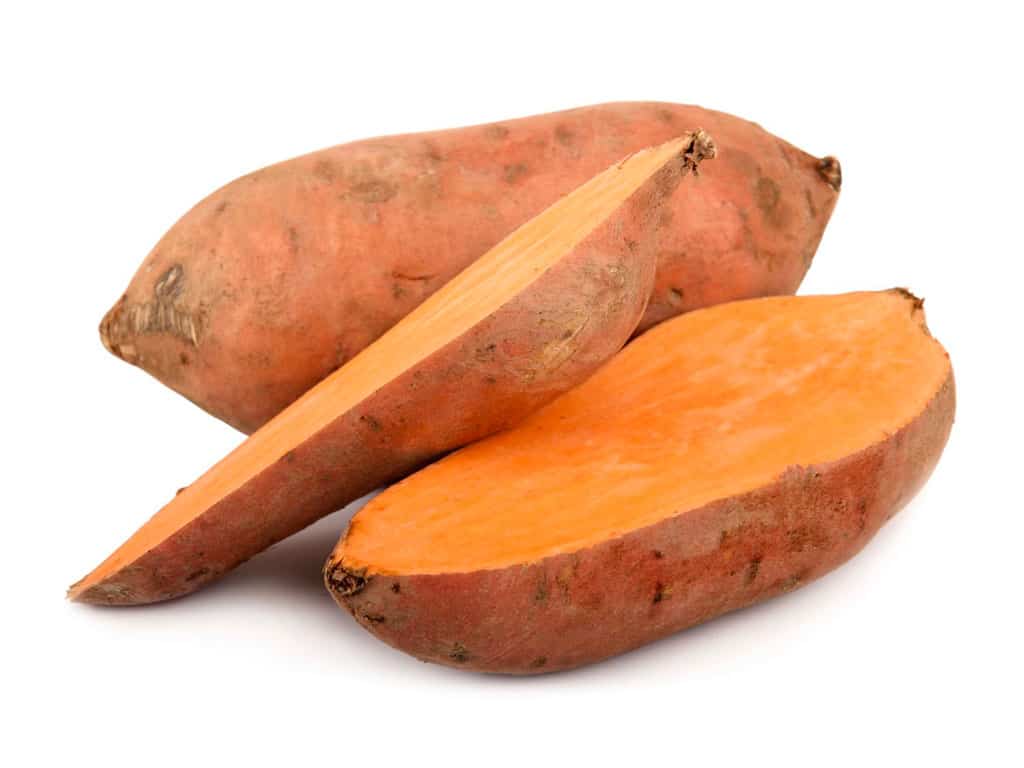

Planting - cuttings or seedlings grown from cuttings.
You can grow sweet potatoes in two ways - by cuttings with their further transplantation into the ground or by seeds (using seedlings or directly into the garden). Each of the methods has its own subtleties.
This method is called grafting. It is not recommended to plant the tuber entirely in open ground at once, since it will take too long for it to germinate and fully ripen. He may simply not have time to ripen before the onset of the first frost. Therefore, you first need to germinate the sweet potato and then plant the cuttings obtained from it.
Cuttings begin in March. There are several ways to carry out this procedure:
- The tuber is placed halfway into the soil, while it is important to take care of sufficient watering (the ground must always be moist) and light (at least 12-13 hours of light). If these conditions are met, the first buds should appear in a week, which will then give growth to the cuttings.
- Wrap the tuber with a damp cloth or napkin, spray it constantly. As soon as the first shoots appear, transfer to a container with soil. The best soil option is light soil, humus and sand mixed in equal parts. Depending on the variety chosen, one tuber will yield 10 to 50 cuttings.
- The third way is to place the tuber 2-3 cm in a glass of water. Change the water periodically so that it does not stagnate. Not later than a month later, transplant the tuber with sprouts into a container with soil, otherwise there is a risk of rotting.
- You can also put the tubers horizontally on their side or vertically in a container with soil, dig in a little, water regularly and provide good illumination and a temperature of at least 20 ° C.
We offer you to familiarize yourself with: Boric acid - application, properties
As soon as the cuttings have reached the desired size (15-20 cm), the weather conditions have become favorable, there is no danger of frost, they are prepared for planting. To do this, they are carefully cut and placed in water for several days.
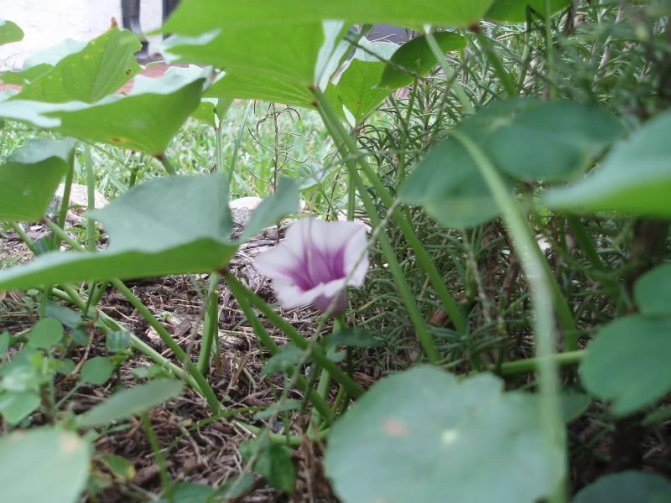

There are two options here - planting seeds directly in the garden and preliminary germination of seedlings. The second method is more reliable.
Some secrets of growing sweet potatoes
There are some subtleties in the sweet potato cultivation technology, the observance of which serves as a guarantee of the future harvest. Under the right conditions for growing sweet potatoes, you can get 50 tons of tubers from 1 hectare.
When planting a plant, you should pay attention to the condition of the roots. Their length should be 5 cm. If they are too thick, then thinning should be done.
At first, the area with the planted cuttings is covered with a film. This will keep the extra warmth and keep weeds out. You can also create a so-called greenhouse: drive pegs around the perimeter and put a film on them.
If you dig up the site again before planting, the earth will become softer, which, in turn, will allow better root crops to develop. In loose soil, they will be much larger. Digging should not be deep - 20 cm will be enough, otherwise the tubers will go into the ground and grow thin.
During the growing season, care must be taken that the plant does not take root in internodes. The stems are lifted and the young roots are cut. This procedure will significantly increase the yield of sweet potatoes.
If the leaves of the sweet potato have turned yellow or have acquired a reddish tint, then this is a signal that the culture needs potash feeding.
Under the right conditions for growing sweet potatoes, you can get 50 tons of tubers from 1 hectare.
Transplanting seedlings into open ground
14 days before disembarking, regularly take out the seedlings to fresh air, constantly increasing the stay outdoors. Thus, the plants are hardened and, subsequently, take root much better. The instructions for planting in open ground are as follows.
- The soil will need to be well loosened and ammonium nitrate added. You need to choose a sunny place where there are no drafts and sharp gusts of wind.
- The spacing between seedlings should be at least 30 cm. Row spacing - 70 cm. The foliage will cover the soil during growth, so moisture is retained well, and the absence of the sun on the surface of the earth due to leaves will not allow weeds to grow. For this reason, weeding is practically impossible.
- It is necessary to plant when the length of the root processes is 5 cm. If the weather is still cold, then it is better to keep the seedlings indoors, but it is undesirable to allow the roots to intertwine.
- Disembarkation is carried out at an angle, almost lying down. It is necessary that at least a few nodes are on the surface of the earth.
Sweet potato varieties
In fact, it is quite difficult to officially classify sweet potato varieties. For example, in China alone, there are about 100 species. Various varieties of potatoes are distinguished by shape, taste and color. Depending on this, the purpose of the tubers also changes. It is used as a vegetable crop and for animal feed. Varieties with a high sugar content are considered dessert varieties. Sweet dishes are prepared from them. Here are several varieties of sweet potatoes grown in central Russia:
- Manchurian. Belongs to the sweeter types. The peel is red, the flesh is rich yellow and very juicy. The variety is suitable for cultivation in summer cottages, as it forms a compact bush with a large number of root crops. Disposed to bloom. The growing season lasts about 90 days. Scourges are up to 1 meter long. Root vegetables of the Manchurian sweet potato retain their properties until spring and are excellent for making vitamin salads.
- White. The variety of domestic selection was bred in Novosibirsk. As the name suggests, it has a light skin and white flesh. The early-ripening sweet potato variety has a generous harvest, and the taste and structure of the tubers resembles elite potato varieties.The pulp is crumbly and dry.
- Beauregard. The American sweet potato variety is grown in central Russia and is famous for its fruit strength. Root crops practically do not crack and have a juicy orange pulp. The peel is copper-colored, the lashes are powerful, the leaves are heart-shaped. The tubers are large, weighing about 1 kg. The variety is resistant to diseases.
- Purple. Mid-season sweet potato produces flowers in July and is characterized by intensive growth of stems, leaves are whole, without cuts. It stands out among other root crops with a bright dark purple color, a white edging is clearly visible in the section.
- Ginseng Red. Growing in the middle lane of this variety of sweet potatoes is quite common. The taste of its ribbed fruit is especially close to that of regular potatoes. The pulp is creamy, the skin is pink-white, the lashes are of medium length and bright red. Root crops are distributed along the entire length of the stem. The yield is high.
- American beige. The bush is compact, the leaves are three-toothed, the growing season is 100 days. Fruits are beige, firm, moderately sweet, with a high starch content.
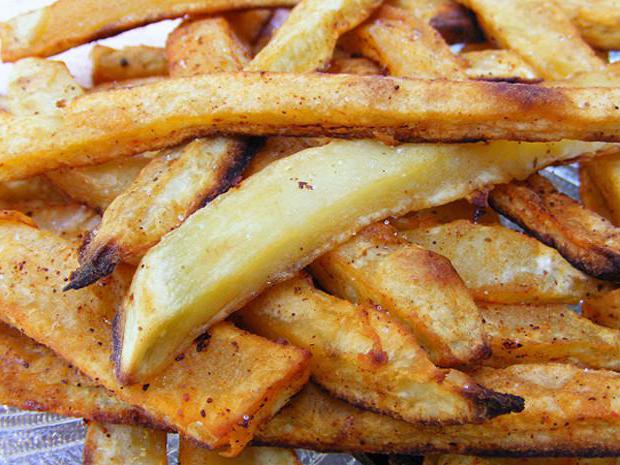

Diseases and pests
Due to the fact that the sweet potato is an overseas "guest", many diseases and pests inherent in our region do not threaten this root crop. But still, some of them get to root crops.
- Worms. To combat them, you need to remove the affected parts of the plant, and treat the rest with an insecticide solution. Or you can use a folk remedy: soapy water with lemon and garlic. Mix 50 grams of liquid soap with the juice of half a lemon and add 5 crushed garlic cloves there. Spray the sweet potato several times with a break of 2-3 days.
- Chafer. The fight against it is carried out using an infusion of onion husks (the ratio of husks to water is 1: 3). Insist 5 days and spray the plant throughout the growing season. If traditional methods do not help, you should turn to such drugs as Fitoverm and Aktofit.
- Insecticides can also help control spider mites, whiteflies, locusts and wireworms.
- Of the sweet potato diseases, the most common is the black leg. The affected areas must be removed. And then to change the aspects of care: to moisten the soil less, and also to reduce its acidity by liming. The site should be chosen well-ventilated and well-lit.
Prevention of the appearance of any disease and pest is the observance of all recommendations for cultivation and their timely implementation.
Batat is exotic for our regions. However, it contains so many useful elements and substances that it is still worth trying to grow this tropical root crop on your site.
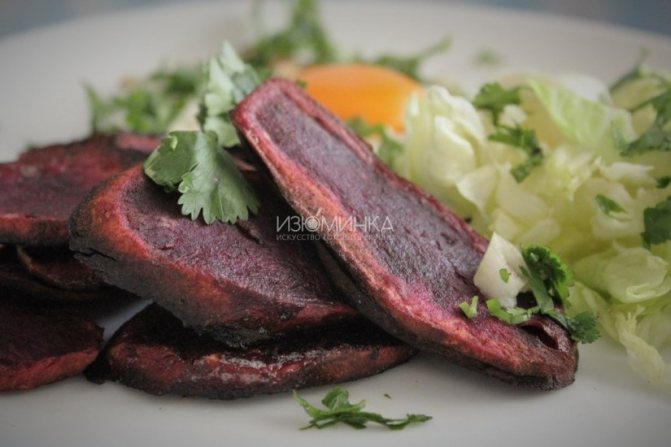

I'm ready to tell you about the sweet potato. Planted this year, uh-huh. Grown from ten bushes as much as half a bucket of pot-bellied little things! And now I don’t know - either to be proud that I have at least something for culinary experiments, or it is shameful to hide in my burrow and not admit my own garden “exploits”. Be that as it may, but I really have a couple of tubers to enjoy - you certainly can't cook much, but here's a fried sweet potato, for example, I've already tried. And what can I tell you ... it's not usual, of course, but delicious! Interesting, bright, original. At least I, a lover of vegetables, really, really liked it. I personally like the pronounced sweetish notes in unsweetened dishes, so I can recommend this option to those who like me, lovers of such combinations. Butter, a little chili, a rich purple sweet potato - just a fairy tale! Of course, the sweet potato may not be purple - I just had one, and you take the one that is at hand. Unless, of course, you decide to cook a fried sweet potato in a pan, and I strongly advise you to decide, because ... well, just because it's delicious - in my opinion, quite a worthy reason, don't you agree? Well, or put another way - is there a reason not to cook? Didn't find it? Then go to the kitchen!
Does a pan-fried sweet potato look like a potato? I do not know. In my opinion, not very much - it is much sweeter, and the structure is many times more starchy, there is no need to talk about color. At the same time, of course, there is something in common - at least from the point of view of botany.
Did you know that sweet potatoes are incredibly healthy? Firstly, it contains a bunch of antioxidants that slow down the aging process. In addition, sweet potatoes have excellent antibacterial and anti-inflammatory properties, which, you see, immediately adds several bonus points to it. There is no need to talk about the fact that this is a storehouse of vitamins A and C. A lot of usefulness, a minimum of fat and a mountain of essential fiber.
In general, let's finish the conversation, let's go cook fried sweet potatoes in a pan. Now, during the period of the Nativity Fast, the recipe comes in handy.
Ingredients for pan-fried sweet potatoes:
2 sweet potato tubers;
40 g butter;
a pinch of chili;
salt to taste.
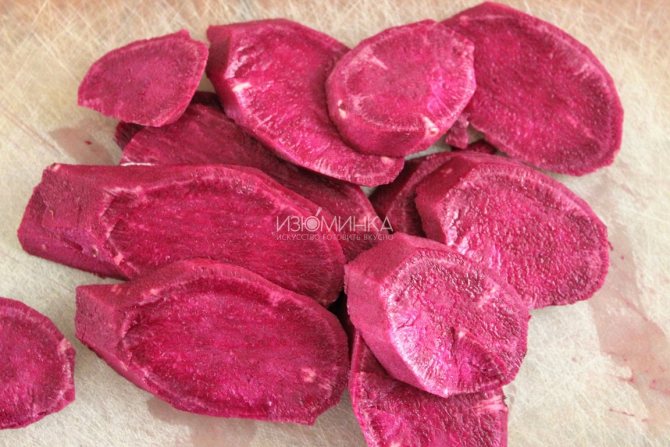

The process is simple to the point. My sweet potato, we clean it. Or we don't even clean it - if you are sure of the manufacturer, you don't have to bother, you just have to use a good sponge.
We cut. Arbitrarily. I wanted records, but the sticks will be very, very good too.
Melt butter in a frying pan. If its quality is not very good, I recommend adding a spoon or two of olive. When the oil warms up properly, spread the sweet potato. Stir occasionally and not very often. Toward the end of the process, salt, add a pinch of hot pepper, trying to distribute it relatively evenly. Fry over medium heat for about 10 minutes in total - the finished sweet potato is soft and pleasant.
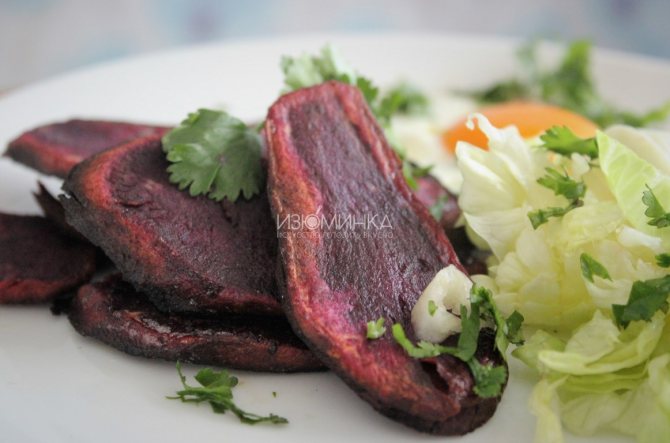

Fried sweet potatoes in a pan are perfect with vegetables, lettuce, yogurt sauce with garlic. And in general he is beautiful! Bon Appetit!
Using
The sweet potato surpasses ordinary potatoes in useful properties. Roots of a tropical product are especially rich in starch and calcium. Many nutritionists recommend using them for vitamin deficiency, and as a general tonic.
In the kitchen, sweet potatoes are used in many countries. Some varieties taste like chestnuts, melons, or bananas. The sweet fruits are dried and used for desserts.
Sweet potatoes with a low sugar content are combined with meat and cereals. It is boiled, stewed or fried. It is advised to add more spices to such dishes.
The upper part of the plant is used as food for livestock. The nutritional properties of green mass are not worse than that of clover and alfalfa.
General information
Sweet potato tubers do resemble potatoes in appearance, but are usually larger in size. There is no official variety classification. However, in China alone, up to 100 varieties of this crop are grown!
According to their taste characteristics, they are divided into sweet, moderately sweet and completely devoid of sweetness. By appointment - for vegetable, dessert and fodder. The varieties also differ in the color of the tubers (from white to copper-brown) and their shape (from spherical to elongated, like a carrot or spindle).
It grows in the form of a creeping vine up to 5 m long or more, which, as it grows, takes root and forms new ovaries at the root nodes. In tropical climates, the plant is perennial; in more northern regions, it requires an annual planting.
Harvesting and storage
Moisturizing the soil should be stopped 20 days before harvesting. Yellowed foliage is a sign of crop maturity.
Digging up sweet potatoes is best in dry weather. Usually this time falls on the end of September - beginning of October.
Before you bring the roots into the cellar, they must be well dried.
The keeping quality of tubers will depend on the conditions in the room. It must be well ventilated. The optimum storage temperature is 10 degrees.
How the sweet potato grows, its features
The sweet potato looks very much like a vine, but its closest relative is the common bindweed. On a long liana, creeping along the ground, there are leaves in the shape of a heart or blade. The plant is very unpretentious, survives in any soil.However, to obtain a good harvest, a temperature regime of at least + 25 ° C is required.
The growing season ranges from 85 to 190 days. The distrustful attitude of gardeners towards this vegetable is very exaggerated. They don't like to grow sweet potatoes because of their sweet taste. But only the dessert variety is endowed with a high sugar content, while other varieties are very similar in taste to potatoes.
Importantly, sweet potatoes do not suffer from harmful insects or diseases that affect nightshades. It does not require hilling, and long vines suppress weeds, which significantly reduces plant maintenance.
